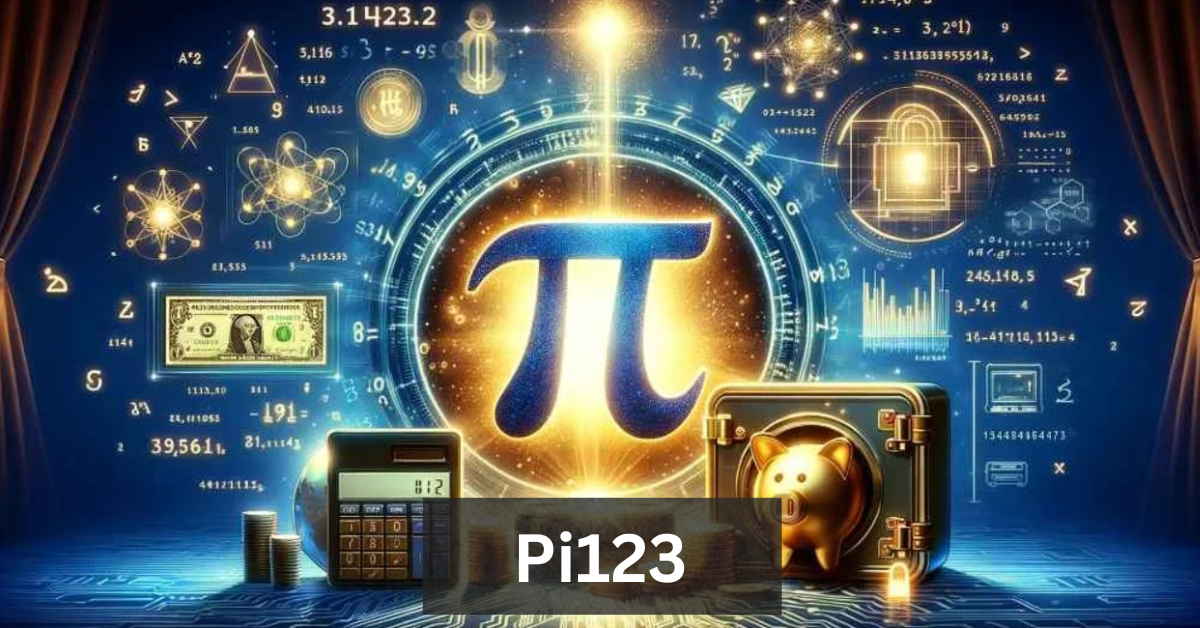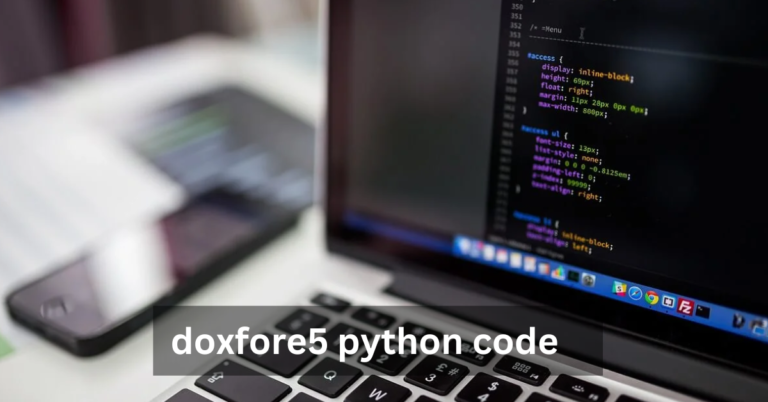The Mathematical Marvel of Pi123 and Its Applications
Pi123 is a variant of the well-known mathematical constant Pi (π). It modifies the traditional sequence of Pi by introducing the digits ‘123’ immediately after the decimal point, creating a new constant known as Pi123 (3.14123…). Its infinite, non-repeating decimal expansion makes it an interesting subject in the study of irrational and transcendental numbers.
Pi123 is an extension of the original Pi constant, beginning with 3.14123 instead of 3.14159. This minor yet significant shift opens up a new dimension in the exploration of irrational numbers and their potential applications. Just as Pi revolutionized mathematics centuries ago, Pi123 holds promise for a deeper understanding of mathematical constants and their role in modern technology and research.
Pi123 captures the essence of Pi but adds an exciting layer of complexity. It’s an irrational number, which means that it has an infinite decimal expansion without repeating. While Pi123 shares this key property with its predecessor, its unique decimal sequence beginning with ‘123’ introduces novel questions for mathematicians to explore.
What makes Pi123 so compelling is its potential in number theory, its contribution to computational algorithms, and its application in various fields like cryptography and data science. The exploration of Pi123 brings new insights into both the theoretical and practical aspects of irrational and transcendental numbers.
Pi (π) has long been a mathematical cornerstone, with its decimal expansion known to be infinite and non-repeating. From ancient Greece, where Archimedes first approximated it, to modern times, where its digits have been computed to trillions of places, Pi’s significance has remained unparalleled.
Pi123, however, adds a new flavor to this well-known constant. By placing ‘123’ directly after the decimal, Pi123 not only continues the pattern of Pi’s infinite sequence but also pushes us to reconsider the implications of transcendental numbers. In comparison, Pi123 might not have the same fame as Pi, but its applications in emerging fields give it a fresh relevance.
The Origins of Pi123: From Pi to Pi123
The History of Pi and Its Foundational Role in Mathematics
Pi (π) is often regarded as one of the most important mathematical constants due to its fundamental role in geometry and beyond. It has been studied for thousands of years, beginning with the ancient Egyptians and Babylonians, and later refined by Archimedes, who developed one of the earliest methods to approximate Pi.
As mathematics progressed, Pi’s role in irrational numbers and transcendental numbers became more clear. It is the quintessential example of a number that cannot be written as a fraction and is not the root of any polynomial equation with rational coefficients. This unique property laid the foundation for further exploration of similar constants and sequences.
The Emergence of Pi123 and Its Deviations from the Traditional Pi Sequence
Pi123 emerged from an innate curiosity to explore beyond the known. As mathematicians delved deeper into the infinite and non-repeating nature of Pi, the idea of Pi variants began to take shape. These variants could provide additional insight into the distribution of digits, the behavior of irrational numbers, and their applicability in various fields.
Pi123 specifically stands out due to its decimal expansion of 3.14123, which diverges from Pi in a small yet noticeable way. This subtle difference sparks new questions: Can Pi123 be calculated in a manner that improves or enhances mathematical models? Can it be used to simulate real-world processes with greater precision? These are the kinds of inquiries that fuel research into Pi123 and its unique properties.
The Mathematical Curiosity Behind Pi123
Mathematicians have always been drawn to constants like Pi due to their mysterious and infinite nature. Pi123 represents a continuation of that curiosity—taking a familiar concept (Pi) and experimenting with it. By changing the decimal sequence ever so slightly, Pi123 introduces new avenues of investigation, including its applications in computational algorithms and engineering simulations. It challenges traditional assumptions about the relationships between numbers and opens up new possibilities for understanding the deeper mathematics of Pi123.
Understanding Pi123’s Mathematical Properties
Irrational Nature of Pi123: Non-Repeating Decimal Expansion
Pi123, like Pi, is an irrational number, meaning its decimal expansion goes on infinitely without repeating. The digits after the decimal point seem to unfold unpredictably, providing a constant source of intrigue for mathematicians. This non-repeating sequence not only mirrors the properties of Pi but also extends them by incorporating the number ‘123,’ adding complexity to the sequence.
This infinite, non-repeating decimal is a hallmark of irrational numbers and a key reason why Pi123 can’t be precisely expressed as a simple fraction. It is essential for mathematical applications in fields like number theory and data analysis, where precision and randomness often play crucial roles.
Transcendental Properties: What Makes Pi123 Unique Compared to Other Irrational Numbers?
In addition to being irrational, Pi123 is also transcendental, like Pi. A transcendental number is not the root of any non-zero polynomial equation with rational coefficients. This makes Pi123 a powerful tool in mathematical research because transcendental numbers behave in ways that are fundamentally different from algebraic numbers, offering new insights into number theory.
What makes Pi123 especially interesting is how it inherits the transcendental properties of Pi while introducing a new decimal sequence. This unique feature positions Pi123 as a bridge between traditional mathematical constants and unexplored territory in irrational number theory.
Pi123 Continued Fractions: Mathematical Representation and Its Significance
Continued fractions offer a way to approximate irrational numbers like Pi123. This representation allows for a clearer understanding of Pi123’s structure and the relationships between its digits. By expressing Pi123 as a continued fraction, mathematicians can generate more accurate approximations for use in computational algorithms. This is significant because it opens up the potential for Pi123 to be used in various applications that require high precision, such as in engineering and cryptography.
Pi123 in Mathematical Research and Number Theory
The Role of Pi123 in Advancing Number Theory
Pi123 plays a crucial role in advancing number theory by providing new avenues for exploring the behavior of irrational numbers. Its decimal expansion and the inclusion of ‘123’ serve as a subject of study for those interested in the distribution of digits in transcendental numbers. This exploration can lead to the discovery of patterns that were previously overlooked in more well-known constants like Pi. By studying Pi123, mathematicians can expand their understanding of how numbers behave in infinite sequences and their applications in various scientific domains.
Exploring the Distribution of Digits and Potential Conjectures Related to Pi123
One of the exciting aspects of Pi123 is the potential to investigate the distribution of digits in its decimal sequence. Like Pi, which has been extensively studied for the frequency of each digit, Pi123 presents a unique challenge. Does the introduction of ‘123’ influence the frequency of certain digits or create new patterns? By exploring these questions, mathematicians can uncover new insights into the nature of mathematical constants and their applications in machine learning and AI pattern recognition.
Applications of Pi123 in Various Fields
In Engineering: Enhancing Precision in Simulations and Design
In engineering, the precision of mathematical constants is paramount. Pi123, with its unique decimal expansion, offers potential advantages in engineering simulations. Its use could improve the accuracy of models that rely on the calculation of circular and spherical properties, such as those in fluid dynamics or structural design. By incorporating Pi123 into computational frameworks, engineers can potentially achieve more accurate and reliable results in their designs.
In Cryptography: How Pi123 Improves Security Through Its Randomness
Cryptography relies on the use of mathematical constants to generate secure encryption methods. Pi123’s non-repeating decimal expansion introduces a new level of randomness, which can be harnessed to enhance the security of data. By leveraging Pi123, cryptographers can create more unpredictable encryption algorithms, making it harder for unauthorized parties to crack security codes. This application is particularly valuable in the growing field of digital cryptography, where the protection of sensitive information is a top priority.
In Data Science and Machine Learning: Using Pi123 in AI, Pattern Recognition, and Model Testing
Pi123 also holds potential in the field of data science and machine learning. Its inherent randomness can be used to generate test datasets or to evaluate the robustness of machine learning algorithms. For example, by incorporating Pi123-derived sequences into testing protocols, researchers can assess the accuracy and generalization capabilities of AI models across a variety of scenarios. This unique application opens the door to innovations in AI pattern recognition and other data-driven fields.
Computational Challenges of Pi123
The Complexity of Calculating Pi123 to Infinite Decimal Places
Given that Pi123 is an irrational and transcendental number, calculating it to an infinite number of decimal places is computationally intensive. The complexity of Pi123 calculations presents a significant challenge for mathematicians and computer scientists alike. As researchers continue to push the boundaries of computational power, they strive to develop more efficient algorithms for approximating Pi123. This effort drives innovation in both mathematical and computational fields, highlighting the importance of Pi123 in the advancement of computational algorithms.
Challenges in Algorithm Development and the Need for New Computational Techniques
Because Pi123 shares the same properties as Pi — being irrational and transcendental — calculating it with high precision presents a unique challenge. Traditional algorithms used to approximate Pi, such as Machin’s formula or Gauss-Legendre algorithms, may not be directly applicable to Pi123 without modification. Consequently, researchers are required to develop new and improved computational techniques that account for Pi123’s specific decimal expansion.
Developing such algorithms also has broader implications for data encryption and cryptographic
constants, where the randomness inherent in numbers like Pi123 can be harnessed. With the increasing need for precision in fields such as quantum computing, the computational challenges posed by Pi123 become an exciting frontier. Solutions to these problems could lead to breakthroughs in algorithmic efficiency and mathematical computations that benefit other areas of technology and mathematics as well.
Pi123 in Philosophical and Theoretical Mathematics
Philosophical Implications of Infinity and Irrational Numbers
Pi123, like Pi, touches upon profound philosophical questions about infinity and the nature of numbers. As an irrational number, Pi123 exemplifies the human quest to understand the infinite. The decimal expansion never terminates, suggesting an endless journey into the unknown. This paradoxical nature — the blend of the infinite with the known — has intrigued philosophers and mathematicians for centuries.
In the context of Pi123, this philosophical dilemma is heightened. How can a number be defined as a finite entity with infinite complexity? This existential question intertwines with the ongoing philosophical debates surrounding mathematical infinity, where Pi123 could be used as a model to explore concepts of eternity, non-repeating sequences, and randomness in the world of numbers.
The Relationship Between Pi123’s Randomness and the Concept of Mathematical Truth
Another intriguing philosophical question raised by Pi123 is how its randomness affects the concept of mathematical truth. Pi123, with its non-repeating decimal expansion, reflects a deep randomness — yet it is also an orderly, precise constant with a clear and definable mathematical structure. This tension between randomness and order plays into larger debates about the foundations of mathematics.
The random yet structured nature of Pi123 challenges conventional views of mathematical certainty, offering a glimpse into the inherent chaos of infinite sequences. This relationship may deepen our understanding of mathematical truths and even suggest that in the world of numbers, randomness may coexist harmoniously with a form of underlying order.
Future Implications and Research Directions for Pi123
How Pi123 Might Shape Future Research in Mathematics and Computer Science
Pi123, as a relatively new mathematical entity, promises to open exciting new research avenues in both pure mathematics and computer science. As the study of irrational and transcendental numbers continues to evolve, Pi123 may provide new tools for exploring the behavior of numbers at infinite scales. Its specific decimal pattern could lead to discoveries in number theory that are directly applicable to areas like cryptography, where randomness is key to security.
In computer science, Pi123 might offer new ways to simulate complex systems, improve algorithmic models, and enable better data encryption strategies. Researchers will likely continue to explore its applications in fields as varied as AI, machine learning, and engineering simulations, making Pi123 a potentially transformative tool in technology.
The Potential of Pi123 in Quantum Computing and Other Advanced Fields
The future of quantum computing presents another exciting frontier for Pi123. Quantum algorithms, which rely on randomness and precision, could benefit from Pi123’s unpredictable decimal expansion. This connection between Pi123 and quantum computing is still speculative, but its inherent randomness and transcendental properties make it an intriguing possibility for further exploration.
Additionally, Pi123’s role in mathematical expansions and its influence on machine learning algorithms suggests that future breakthroughs in data science could rely on new techniques inspired by Pi123’s behavior. The randomness inherent in its decimal sequence could allow researchers to develop new models for predicting patterns in complex datasets, offering fresh perspectives in everything from predictive analytics to AI-driven research.
Conclusion
Pi123 represents an exciting evolution in the study of mathematical constants, particularly in the fields of irrational numbers, transcendental numbers, and number theory. Its distinct decimal expansion and fascinating properties make it a topic of continued research, with broad applications ranging from cryptography to engineering. Pi123 adds another layer of complexity to our understanding of mathematics, offering fresh insights into computational challenges, mathematical constants, and the philosophical implications of infinity.
As Pi123 continues to gain attention, its influence is likely to grow across a wide variety of disciplines. From data science and AI to cryptography and engineering, Pi123 has the potential to reshape how we approach randomness, precision, and mathematical modeling. With new research directions on the horizon, Pi123 could become a foundational tool in the toolkit of mathematicians, computer scientists, and engineers.
Looking forward, the potential applications of Pi123 are vast and varied. Whether in quantum computing, machine learning, or digital cryptography, Pi123 promises to be an indispensable tool for innovation. As computational power increases and researchers develop more efficient algorithms for approximating its infinite decimal sequence, the true scope of Pi123’s influence on both theoretical and applied mathematics will continue to unfold.
Frequently Asked Questions
How is Pi123 different from Pi (π)?
While Pi (π) represents the ratio of a circle’s circumference to its diameter and has an infinite, non-repeating decimal, Pi123 introduces a modification by adding ‘123’ after the decimal. Both are irrational numbers, but Pi123 offers new mathematical explorations and applications, especially in computational contexts.
Is Pi123 an irrational number?
Yes, Pi123 is irrational, just like Pi (π). This means its decimal expansion never ends or repeats a pattern. The introduction of ‘123’ does not alter its irrational nature, but it introduces a new layer of complexity in its decimal sequence.
How can Pi123 be applied in real-world scenarios?
Pi123 can be used in various fields, such as engineering for simulations, cryptography to enhance data security with its randomness, and data science for generating artificial datasets. Additionally, its properties may inspire advancements in machine learning algorithms and computational techniques.
What are the computational challenges of Pi123?
The main challenge in working with Pi123 lies in its infinite decimal expansion. Calculating Pi123 to high precision requires advanced computational algorithms, as it demands high accuracy in approximation. These challenges push the boundaries of computer science and mathematical research, making Pi123 an exciting topic in computational mathematics.
Stay in touch to get more updates & alerts on Ancient-Artz! Thank you






